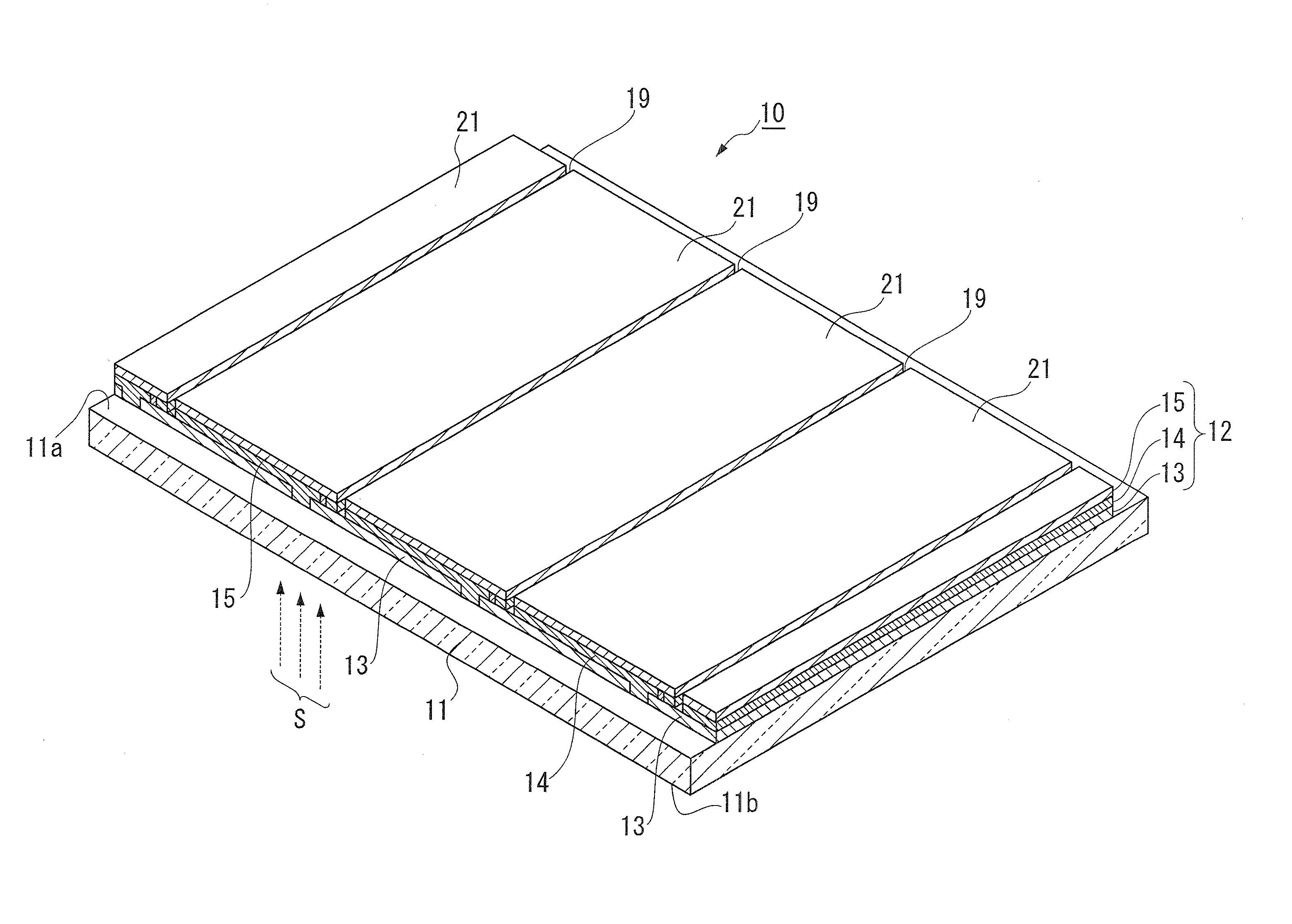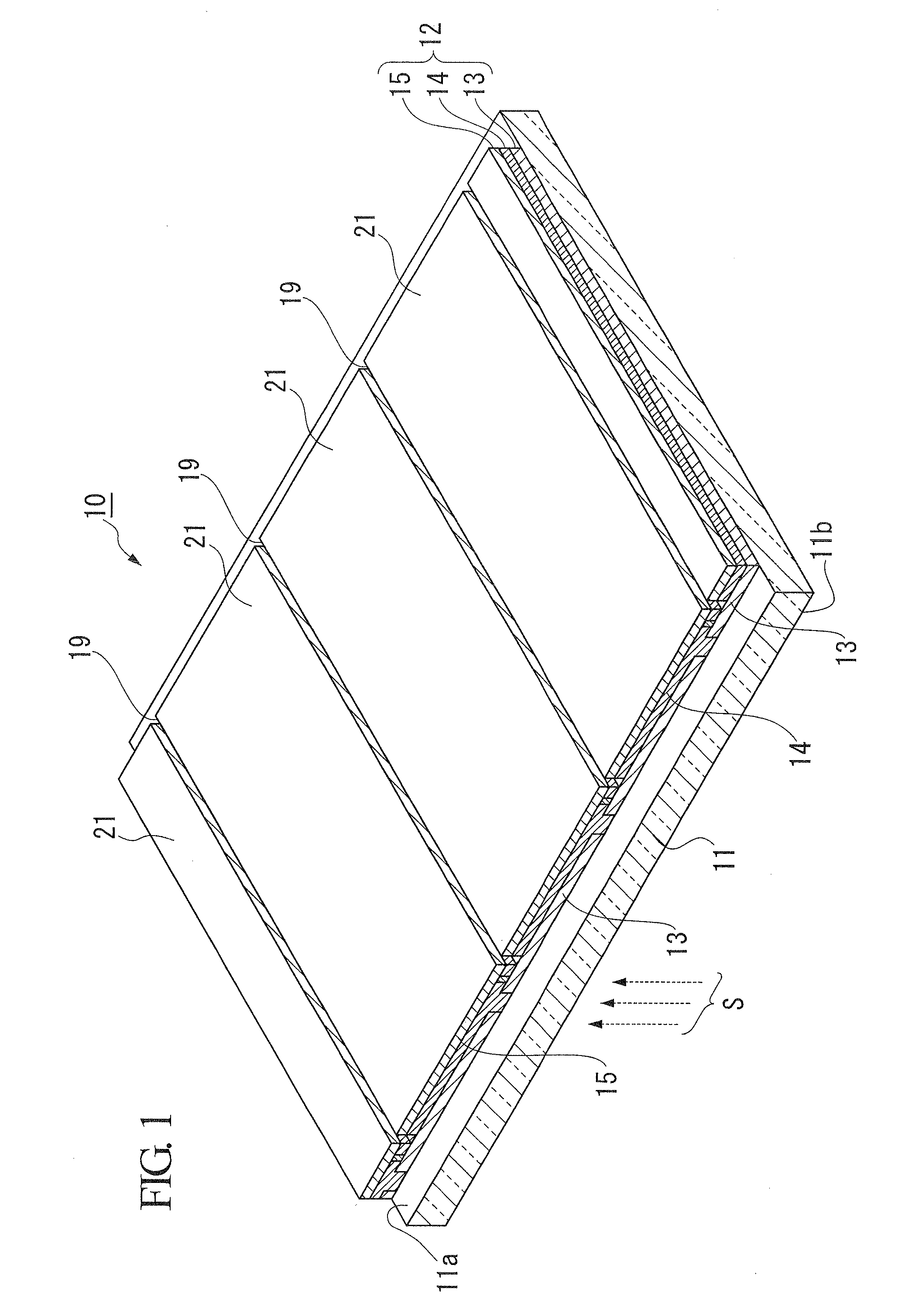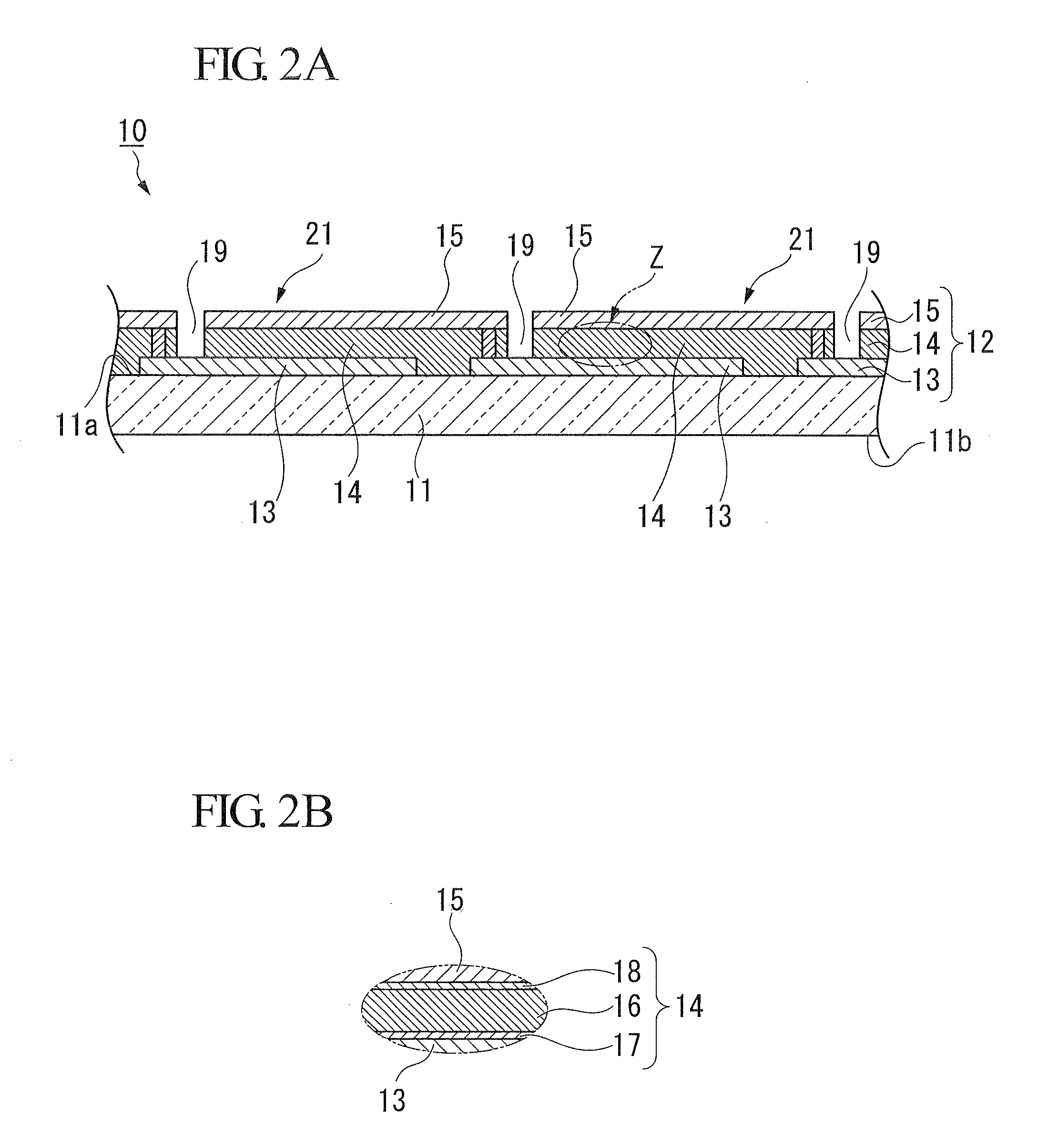Photovoltaic cell manufacturing method
a photovoltaic cell and manufacturing method technology, applied in the field of photovoltaic cell manufacturing method, can solve the problems of large amount of energy spent on manufacturing silicon single crystal ingots, cost significantly increases, and high manufacturing cost of photovoltaic cells in which silicon single crystal is used, so as to reduce the number of removal processes, suppress adverse effects, and remove the region at which structural defects exist.
- Summary
- Abstract
- Description
- Claims
- Application Information
AI Technical Summary
Benefits of technology
Problems solved by technology
Method used
Image
Examples
Embodiment Construction
[0056]Hereinafter, an embodiment of a photovoltaic cell manufacturing method related to the present invention will be described with reference to drawings.
[0057]The embodiment is specifically explained for appropriate understanding the scope of the present invention, and does not limit the present invention unless otherwise specified.
[0058]Also, for convenience, the drawings used in below explanation may indicate a portion that becomes relevant part of the present invention in a enlarged state for appropriate understanding the features of the present invention, and the size of each constituent element is not limited to the same size as a practical element.
[0059]FIG. 1 is an enlarged perspective view showing an example of a main section of an amorphous silicon type photovoltaic cell which is manufactured by a photovoltaic cell manufacturing method of the present invention.
[0060]In addition, FIG. 2A is a cross-sectional view partially showing a layered structure of the photovoltaic ce...
PUM
 Login to View More
Login to View More Abstract
Description
Claims
Application Information
 Login to View More
Login to View More - R&D
- Intellectual Property
- Life Sciences
- Materials
- Tech Scout
- Unparalleled Data Quality
- Higher Quality Content
- 60% Fewer Hallucinations
Browse by: Latest US Patents, China's latest patents, Technical Efficacy Thesaurus, Application Domain, Technology Topic, Popular Technical Reports.
© 2025 PatSnap. All rights reserved.Legal|Privacy policy|Modern Slavery Act Transparency Statement|Sitemap|About US| Contact US: help@patsnap.com



